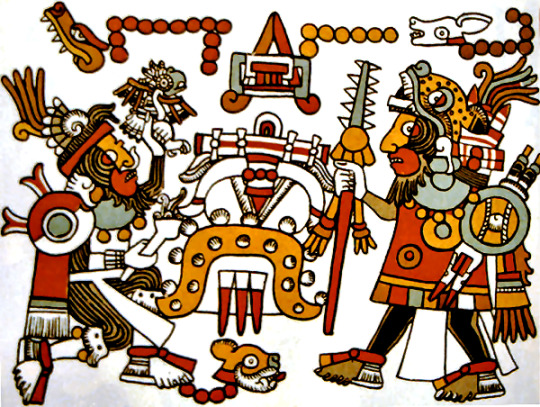#archaeologia

Image courtesy Bancroft Library
D.H Lawrence portrayed Zelia Nuttall as Mrs. Norris in his novel The Plumed Serpent: a great socialite living in a house full of archaeological and painted ceramic figurines in Mexico City, often surrounded by visitors who sat around her listening with admiration to her scholarly stories. This fictional image, somewhat romantic but definitely based on real aspects has been transferred to the academic literature where Zelia Nuttall appears as the “Queen” of Mexican archaeology. But her place in the history of archaeology is still full of silences and ambiguity.
Zelia Nuttall was born in 1857 in San Francisco and died in Mexico City in 1932. She divorced from French linguist Alphonse Pinart and had a daughter Nadine that accompanied her during most of her travels. She visited archives and libraries in Europe, North America and the United States, and presented the results of her archaeological interpretations of pre-Hispanic codices in international conferences. Archaeological material she studied was exhibited at two international fairs of great scientific relevance at that time (Madrid 1892 and Chicago, 1893). Between 1886 and 1932 she published more than forty articles in the most prestigious journals in an emerging context of professionalization of archaeology. Despite her extensive experience and knowledge, Nuttall location in the history of the discipline is somehow poorly understood, probably because she was an “outsider within” and situated always “inbetween.” She was forever caught between Mexico and the United States, between the domestic space she managed as a well known society hostess and the museum where she pursued her scientific interests, and even between a national and an international context of science. In addition, Zelia set a different pattern than other pioneer women archaeologists who travelled to distant places to explore or excavate, but returned to their home countries; she established herself in Mexico in 1904 and made it her country, the land of her research and a place to build a home, and she lived in the Casa Alvarada in Coyoacan, Mexico (now a museum) until her death in 1932.
As a foreign woman in Mexico she was acquainted with the Mexican archaeological community, and was committed with a type of knowledge that talked about and to the nation. Zelia Nuttall was a passionate advocate of the idea that the current inhabitants of Mexico were descendants of the Aztecs, and oriented her archaeological work to contest prevailing evolutionist prejudices that defined the Prehispanic cultures as savages and barbarians. Thus, while some scientists considered sacrifice as a widespread activity among ancient Mexicans, Nuttall said that this overshadowing discourse was harmful for the education of children and youth in Mexico. Instead, Nuttall used archaeological and historical knowledge about ancient Mexicans to promote ideas about a shared humanity among different peoples and communities in the world.

Despite being in a mostly male environment, Zelia Nuttall was able to do archaeology on her own terms. In a moment when archaeologists in Mexico and the United States became associated with institutions and fieldwork came to be seen as the primary method to acquire information about the past, Zelia remained at home. However, this was not a marginalized position for her, from that space she was also able to participate in various scientific communities with national and internationally scope, and she was involved in major archaeological research.
She was even so inspirational she’s made the list of ‘Disney’s Rejected Princesses’!
Zelia Nuttal as imagined as one of 'Disney’s Rejected Princesses’ by Jason Porath
Apen Ruiz (Universitat de Barcelona, Spain)
edited by Brenna
Read more:
Biography by A. Tozzer
From the Society for American Archaeology’s History of Arch Interest Group
From Amanda Adam’s book Ladies of the Field

